We’ve set up shop in the Raleigh/Durham area, but we loved looking back at the Outer Banks (OBX on the local signage). North Carolina’s chain of barrier islands has everything from quaint fishing villages to colossal beach rentals. We took advantage of the off-season lack of crowds to see what the region had to offer. And our friend Heather joined us for an early birthday weekend adventure!
The Wright Stuff
With Rexy parked on an inlet with only waist-high marsh grass for cover, the first thing we noticed about coastal North Carolina was the wind. And that’s part of why the place is famous today.
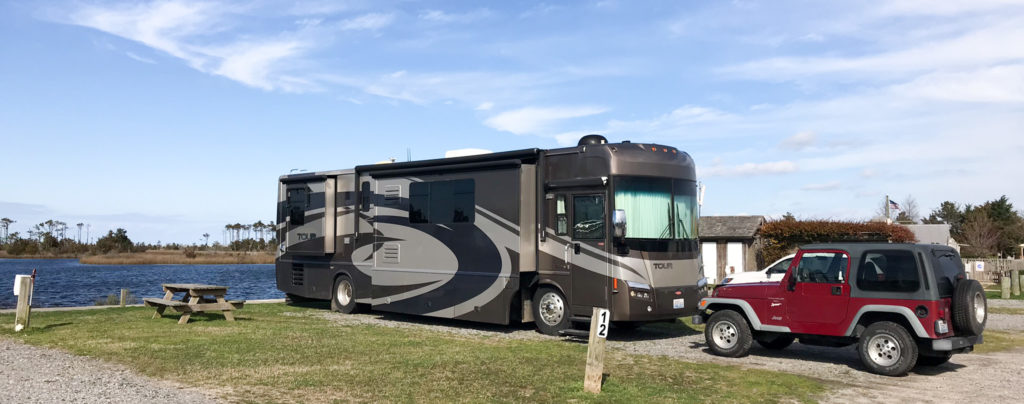
Wilbur and Orville Wright scouted sites across the country to build and test their powered aircraft prototypes. Their criteria: steady winds for consistent testing, soft sand for gentle landings, and isolation for privacy. The beach towns of Kitty Hawk and Kill Devil Hills had all these things. After several years of research and experiments, the brothers made the first powered flights on December 17, 1903.
Today, the Wright Brothers National Memorial houses a wonderful exhibit on the brothers’ lifetime of innovations and the journey to powered flight. With the original at the Smithsonian, a replica of the Wright Flyer sits in the gallery with views of the woods and plains behind it, giving you an idea of how the craft might have looked on the day of first flight.
The 852-foot distance between where the Flyer took off and where it landed on its longest flight (there were four on the big day) doesn’t seem so far now. But I have to remind myself that powered flight had never succeeded before that moment. And within just two decades of the Wright Brothers’ flight, innovators achieved not only sustained powered flight but also military applications during WWI. As if to highlight how commonplace flight is now, a small prop plane flew above us dragging a banner advertising local flight tours.
Click a pic to view a bigger pic
Dune patrol
Did you know that the Outer Banks is home to the tallest sand dune on the Atlantic coast? We definitely didn’t, but Jockey’s Ridge is hard to miss as you drive up and down the islands. The wind was bitter cold on that clear day, so as much as the sand looked like a summer beach, it felt like a blustery and bleak exposed place to endure a wintry day. While other dune-goers brought their kites and hang gliders, we attempted to sled down the slopes on plastic container lids. They didn’t work very well, and we went faster just rolling down the dunes.
Beach horses
We took a day trip up to Corolla to see the wild horses — descendants of colonial-era Spanish Mustangs. That part of the Outer Banks is not connected by regular roads, so you have to drive on the beach to get close. This was Alan the Jeep’s first off-road test for us, and he did great! We each took a turn driving on the sand and weren’t those guys that got stuck. Dolphins popped up along the shore. Local families bundled up in parkas to enjoy a beach day with picnics and lawn chairs. We drove the beach all the way up to the Virginia state line without seeing a single horse. But on the way back, we followed a couple of tour trucks and spotted a small herd hiding behind on a bluff within feet of the beach.
We celebrated our success of finding the wild horses with a trip to Brew Thru, a drive-thru liquor mart. I have never seen this. It weirded me out. But there are several in the area and it’s totally normal for here. We picked up some local beer including the appropriately horse-themed Corolla Gold from Weeping Radish, North Carolina’s oldest microbrewery.
So many fish in the sea
Have I mentioned that I really like aquariums? Past the ruins of the lost colony is the North Carolina Aquarium on Roanoke Island. It’s small but very well designed: its exhibits tell the history and ecological story of the Outer Banks region. My favorite exhibit was called Sea Treasures which was modeled after a sunken ship — the waters off Outer Banks are called the Graveyard of the Atlantic because over 5,000 ships have sunk in the area. Mixed media screens and ship-themed aquarium props make you feel like you’re walking through an underwater wreck. You can even hear the tale of how one ship went down from the vessel’s ghostly captain himself. We even got to chat with some volunteers caring for animals in the Sea Turtle Assistance and Rehabilitation Center.
The inner banks
It’s not actually called that, but the Albermarle Sound that empties into the Outer Banks and Atlantic stretches west into North Carolina. The inland rivers drain into a body of water that ranges from fresh to brackish water. We took a drive around the Sound explore some of the smaller towns like Elizabeth City and Edenton. Elizabeth City has a neat downtown that looks to be on an upswing — shops and restaurants are slowly filling in empty gaps, and there’s a nerdy, artsy vibe from places like the screen-printing makerspace Dear Alchemy. The Victorian and Craftsman neighborhood on the edge of downtown is also adorable. Edenton has a charming main street full of locally owned shops and restaurants. There’s even a trolley that can take you from the Roanoke River Lighthouse up the three blocks to the edge of downtown.

Elizabeth City’s Dear Alchemy is set up in an old hotel; local artists decorated the windows.
RV checkup
A small colony of ants set up shop in some insulation over the door. Rather than setting fire to the panel (my first idea), we’re using homemade ant bait to wear them down into oblivion. Results are encouraging so far.
Lilly watch
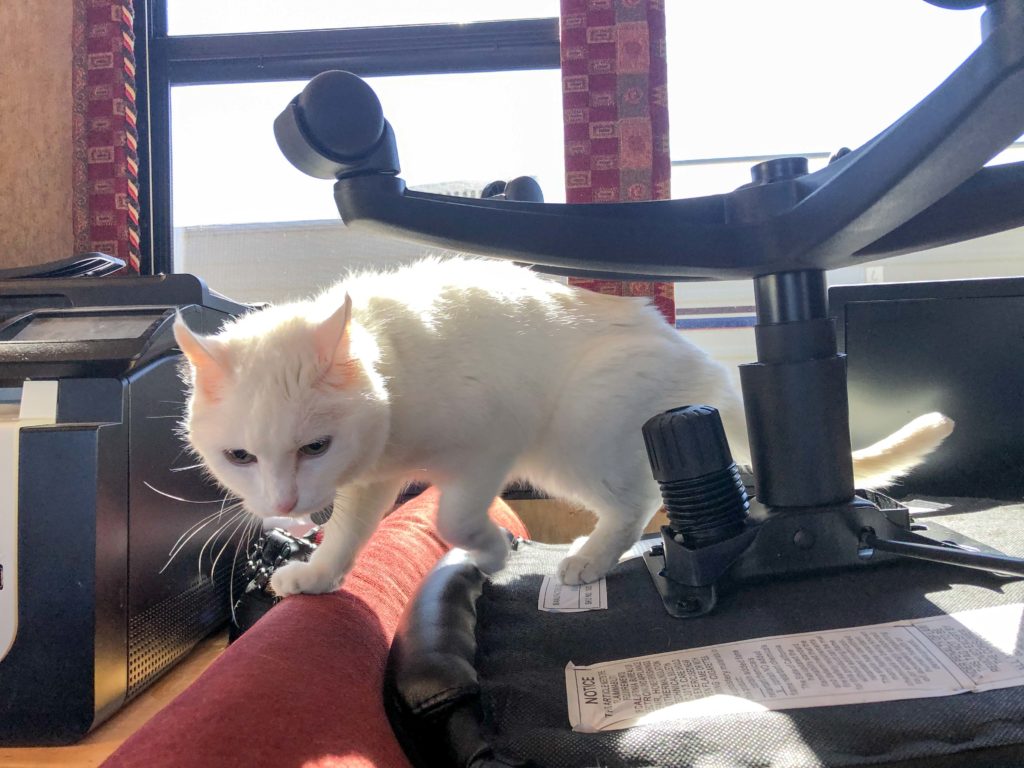
Cat tax: Lilly explores during a lunch stop on the road.
What’s next?
We’re in the Raleigh/Durham area for a couple weeks while the winter recedes in the mountains and further north.
If you have any suggestions of things to see or questions about our travels or RV life, let us know in the comments.

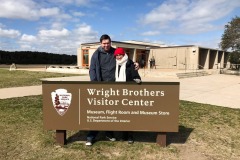
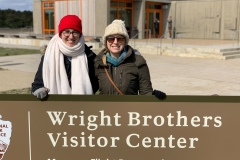

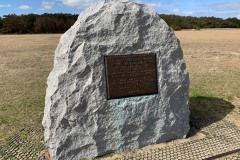
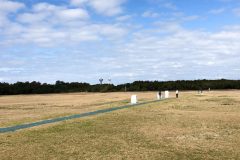
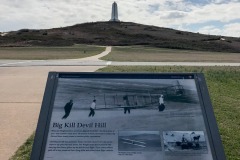

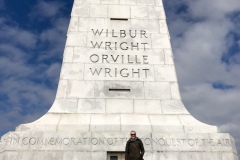
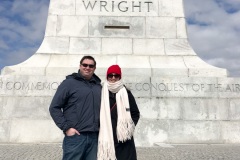
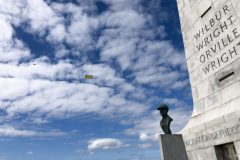
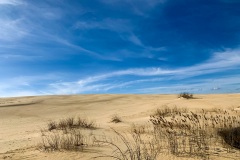
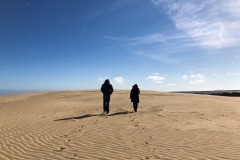
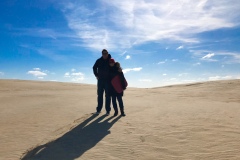
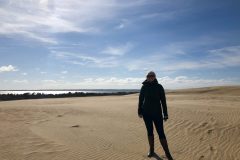
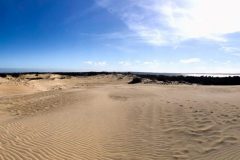

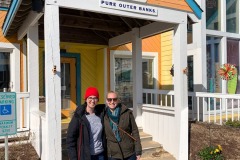
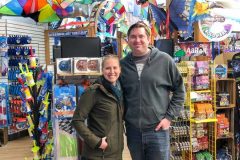
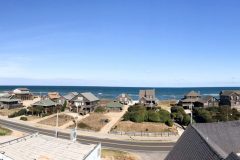
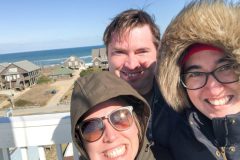
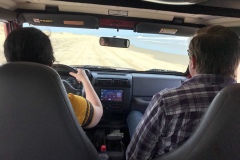
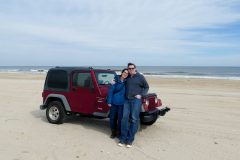

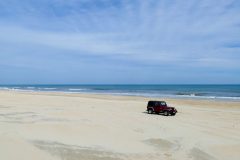
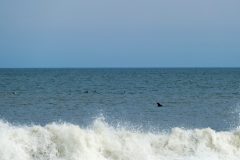

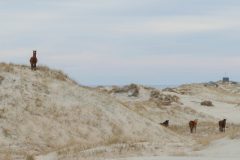
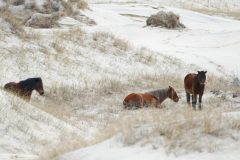
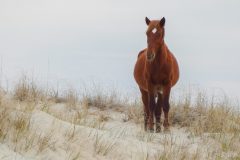
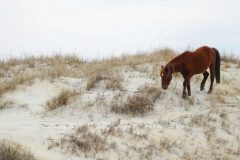
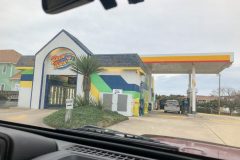
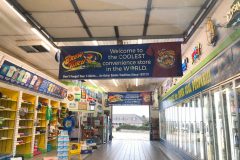
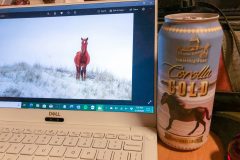
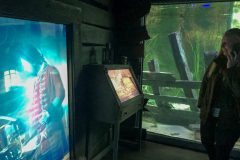

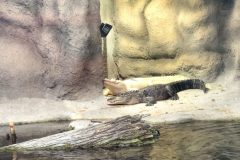
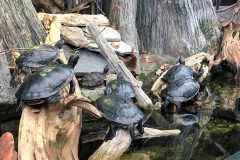
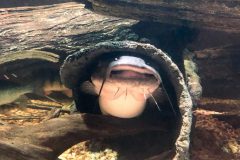
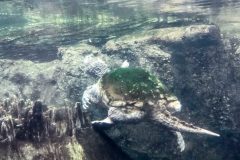
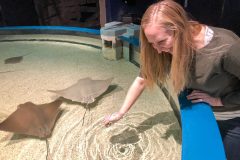
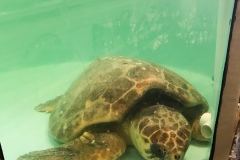
Drive through alcohol places are also in PA, if you make it up that far north 🙂
Also you mention a trolley but I see no pictures. I am disappoint.